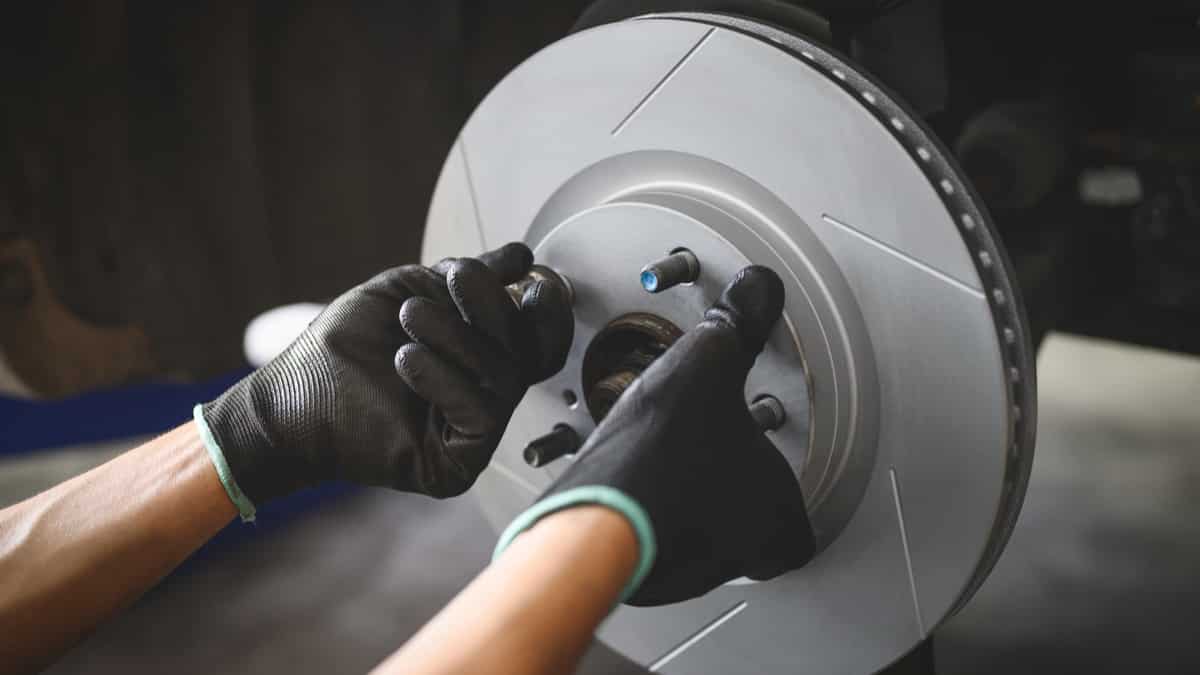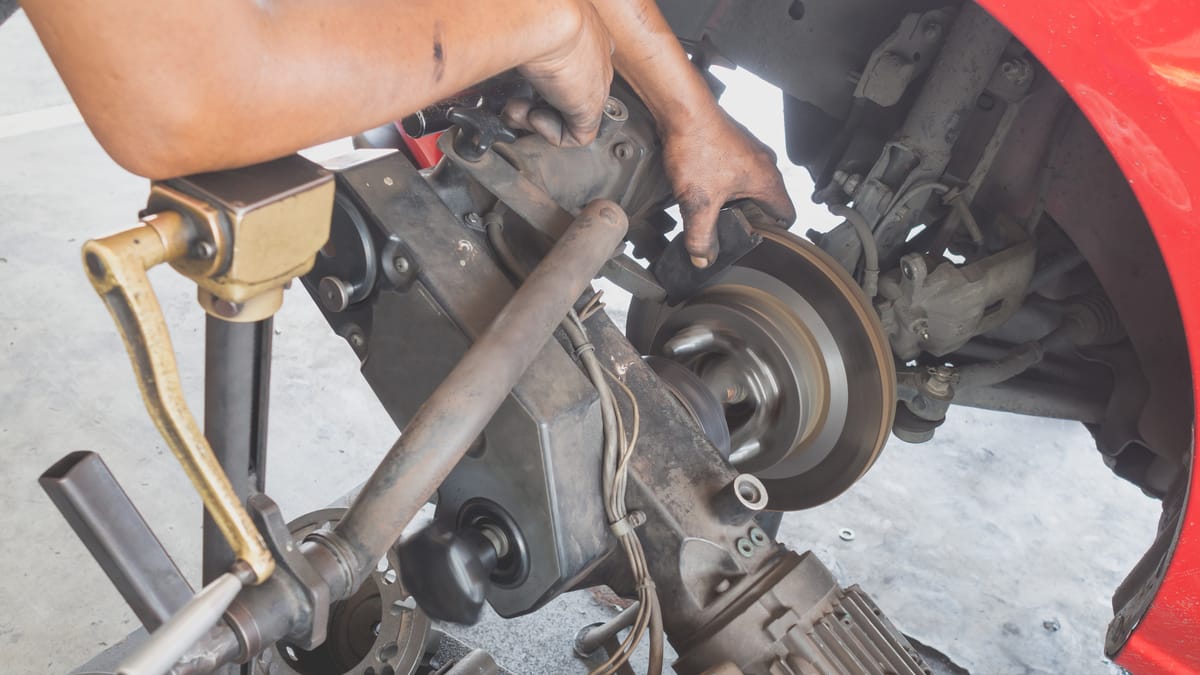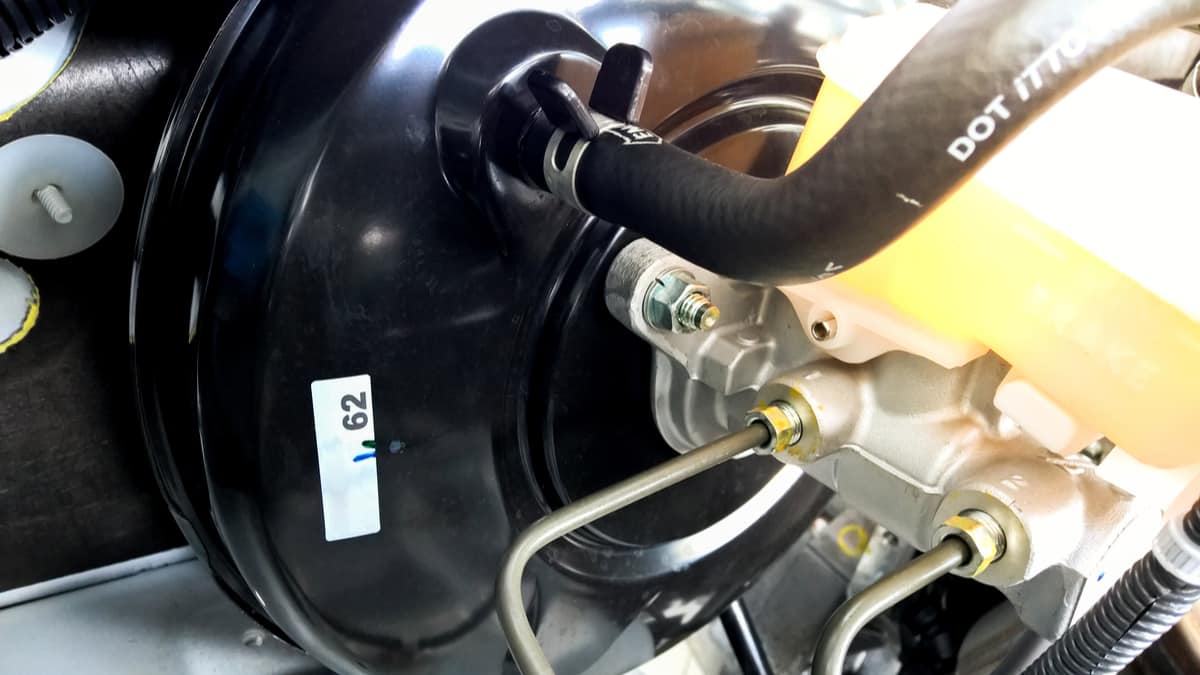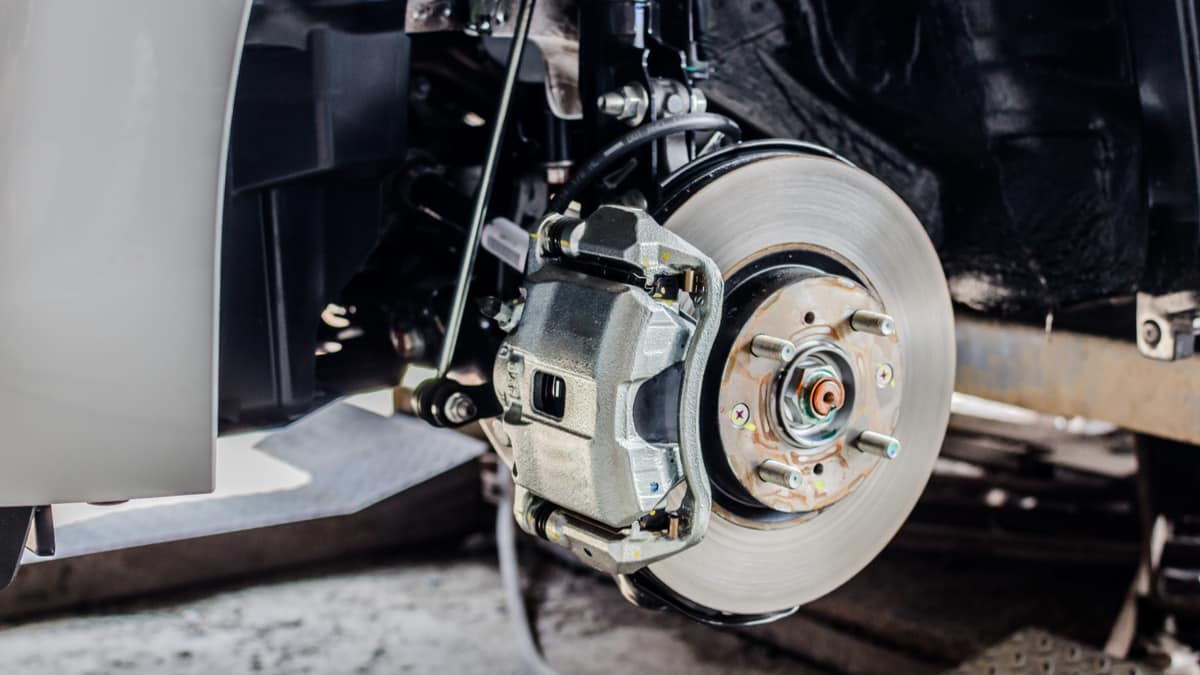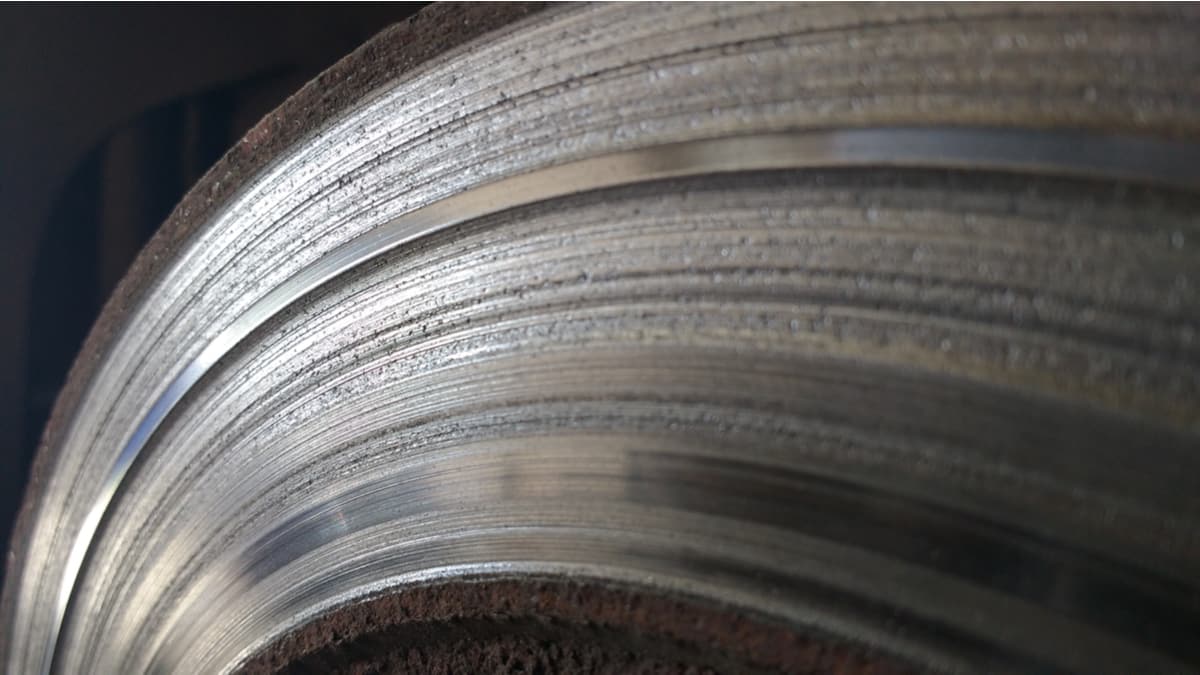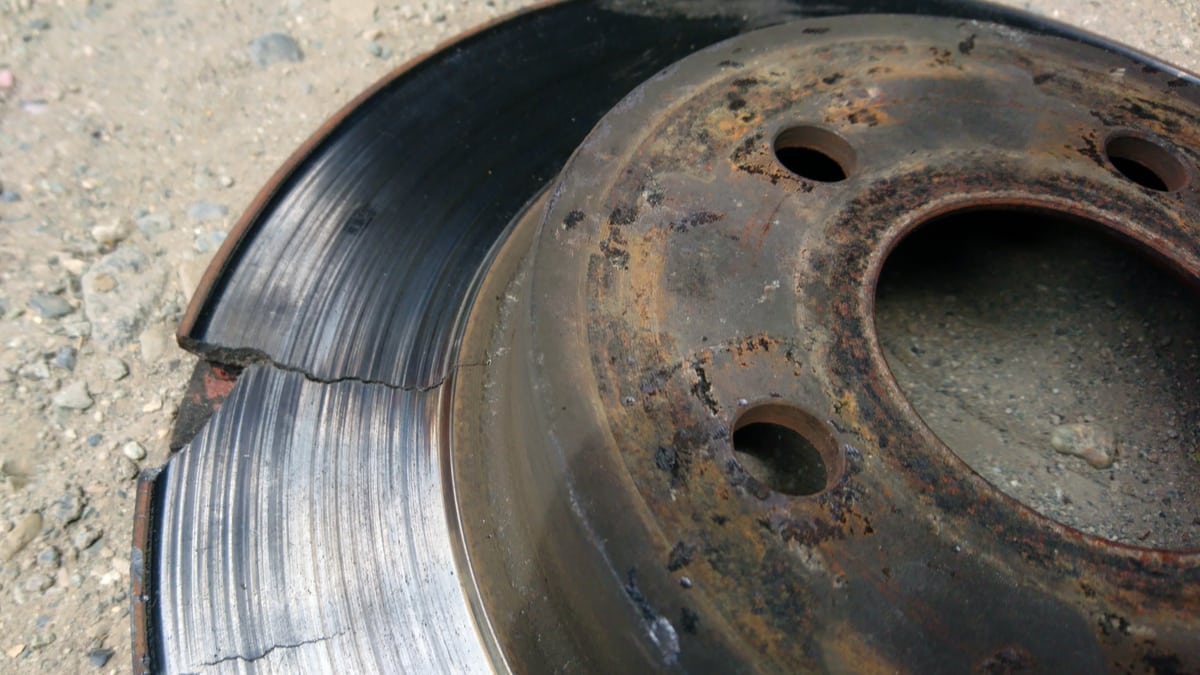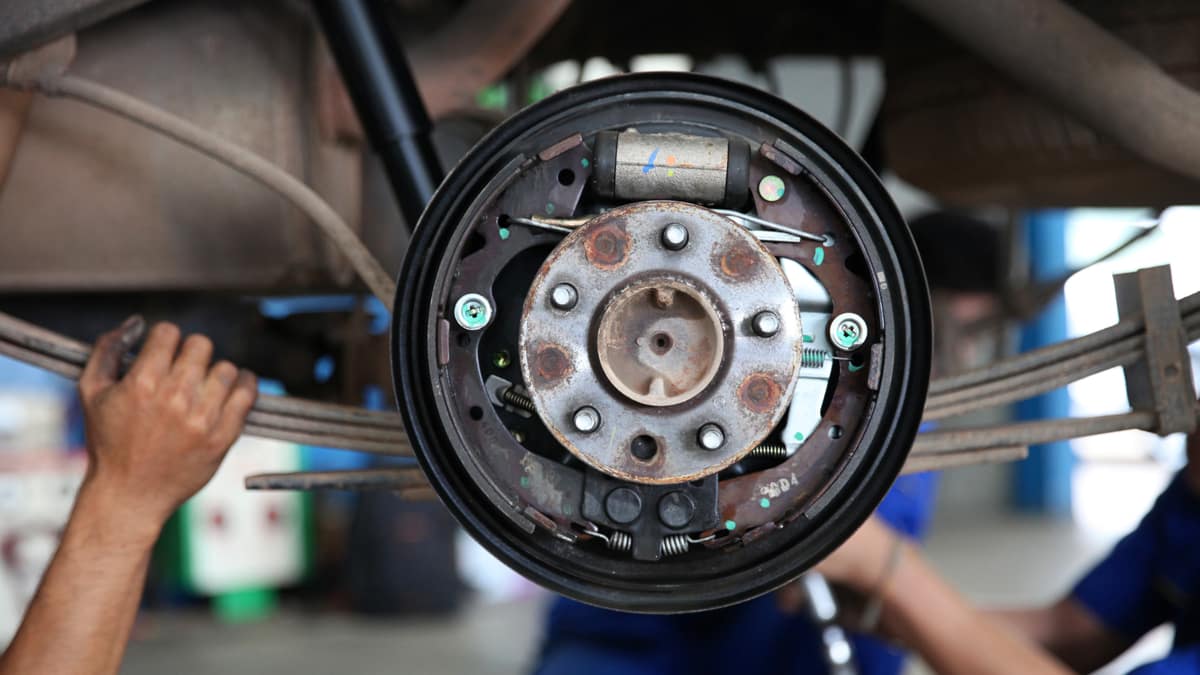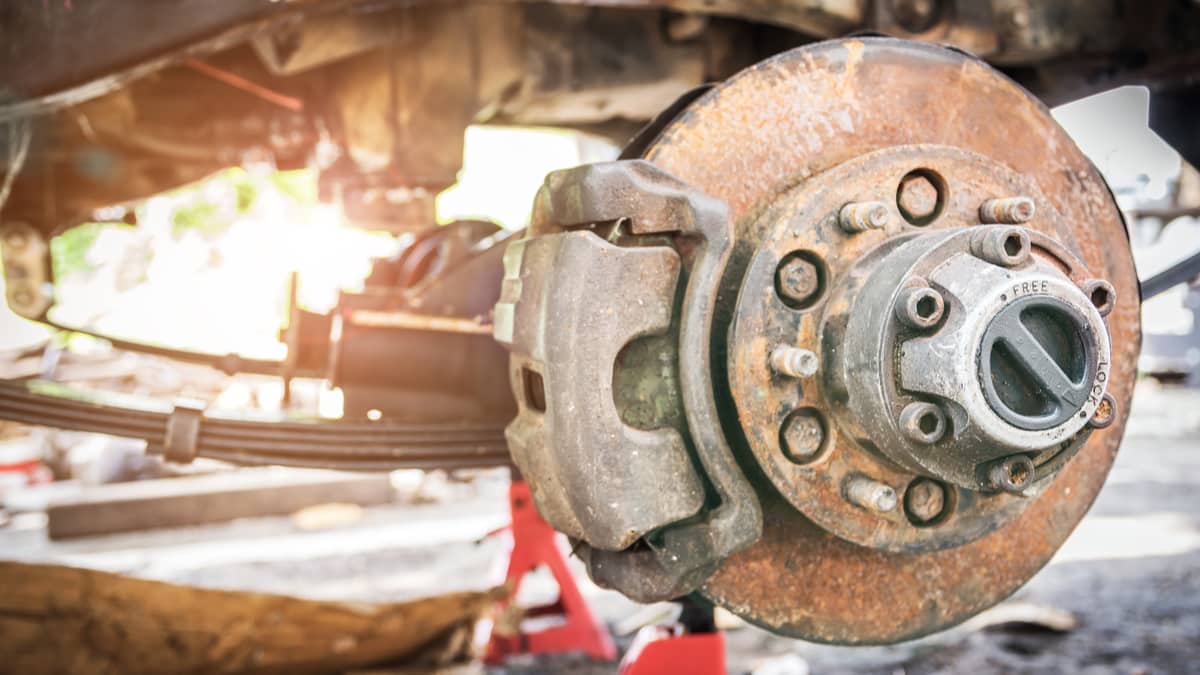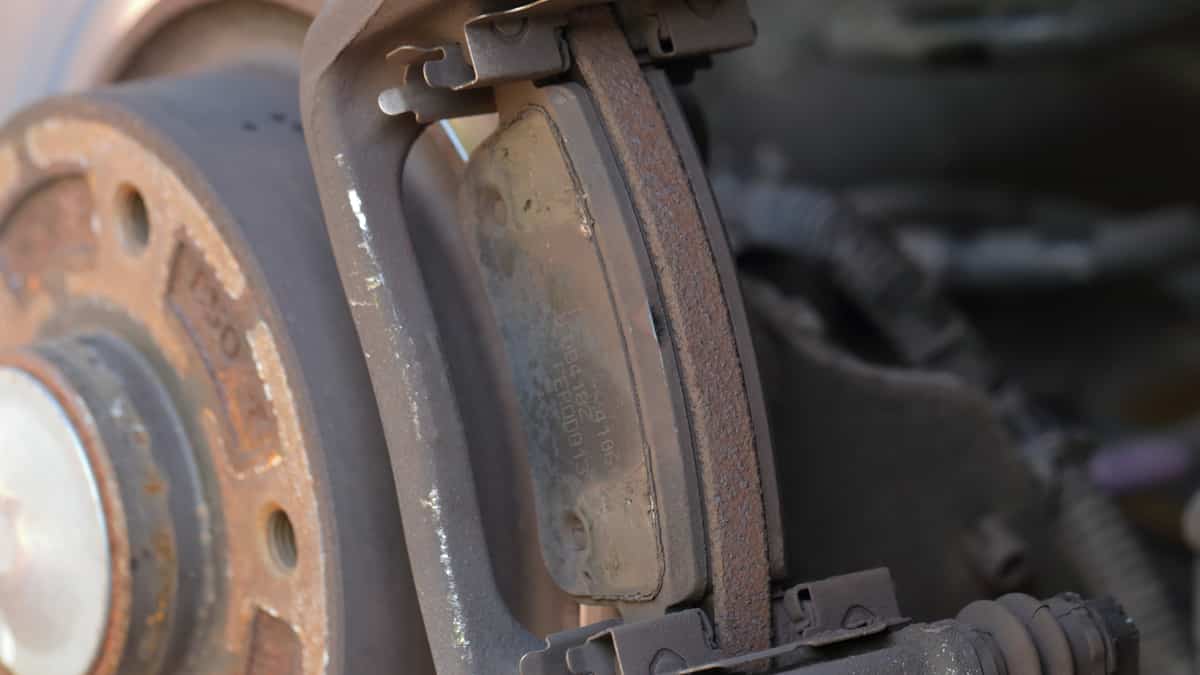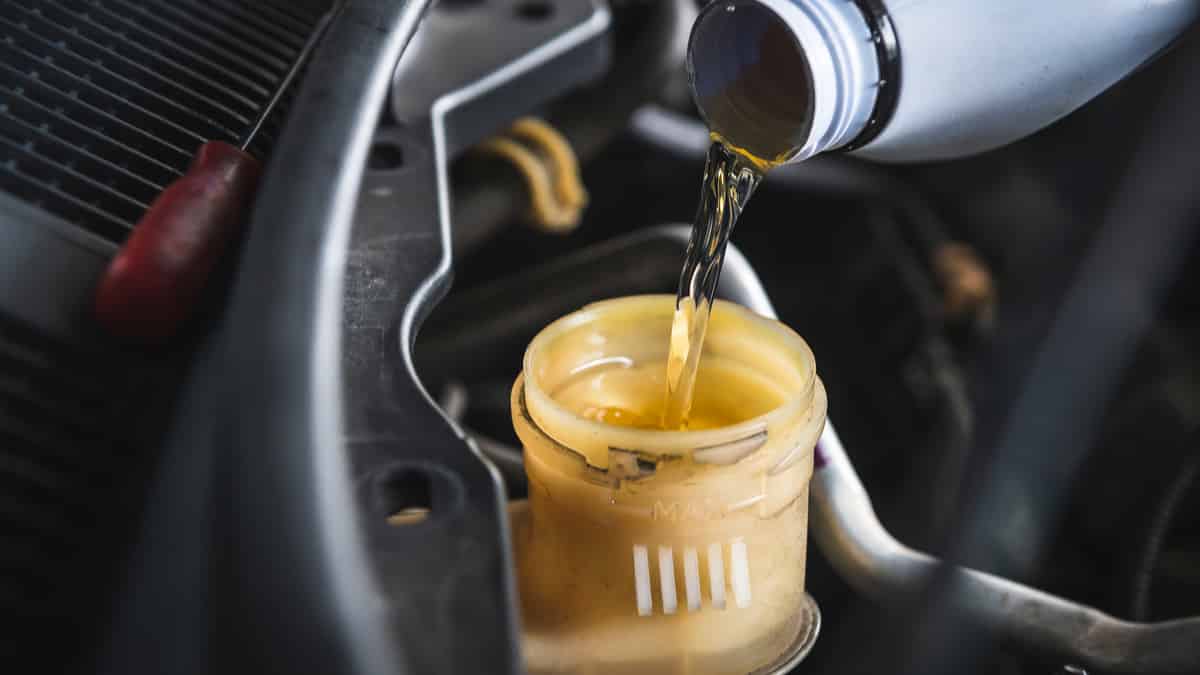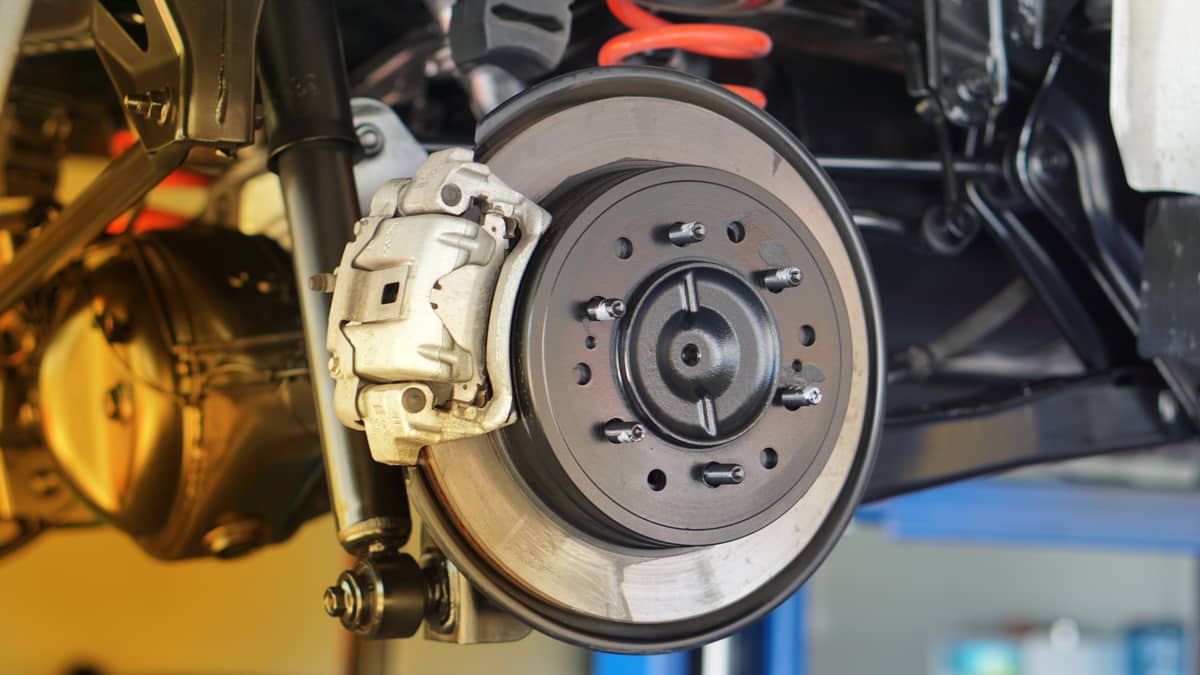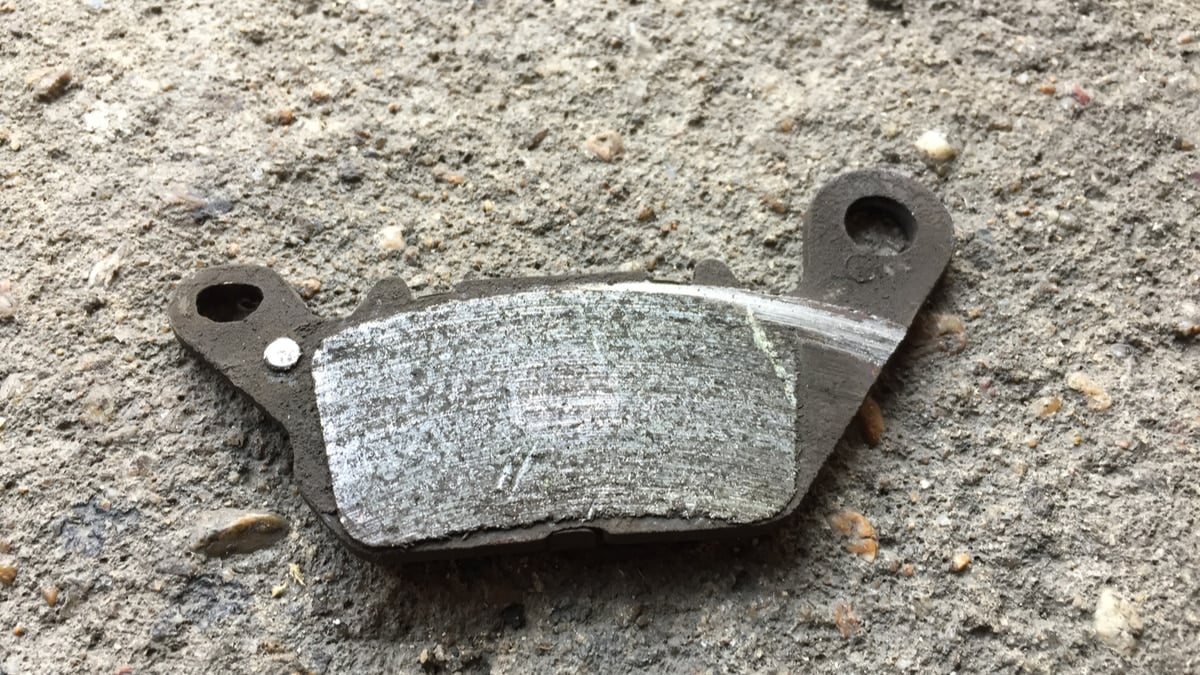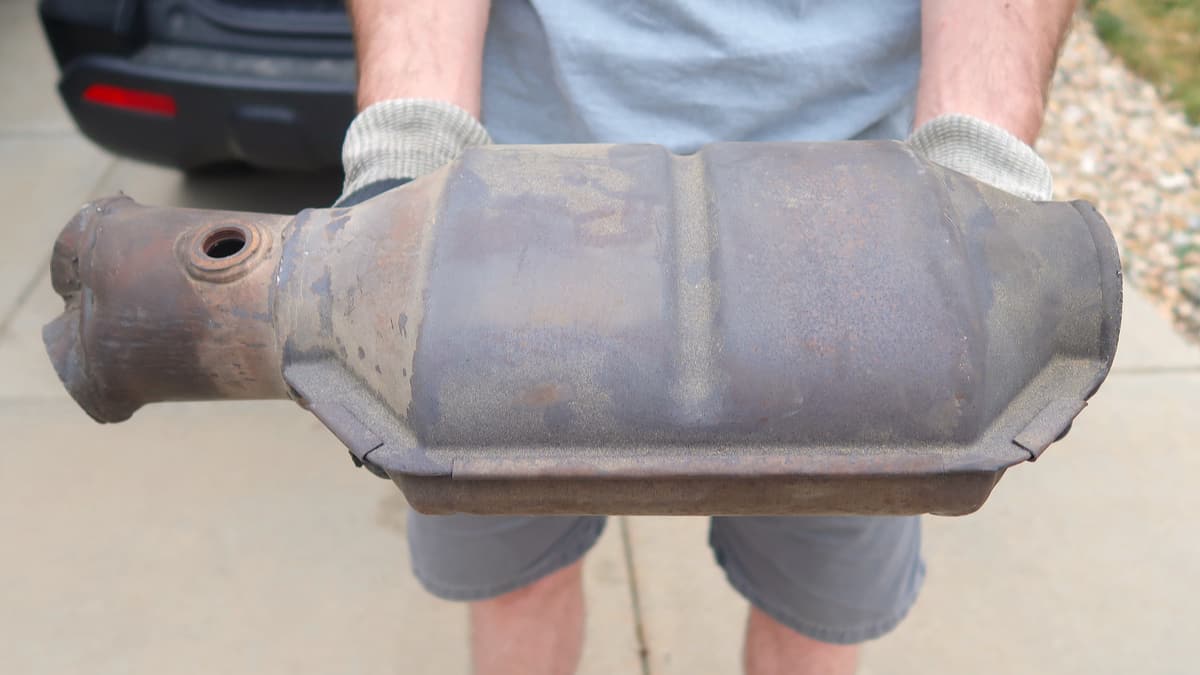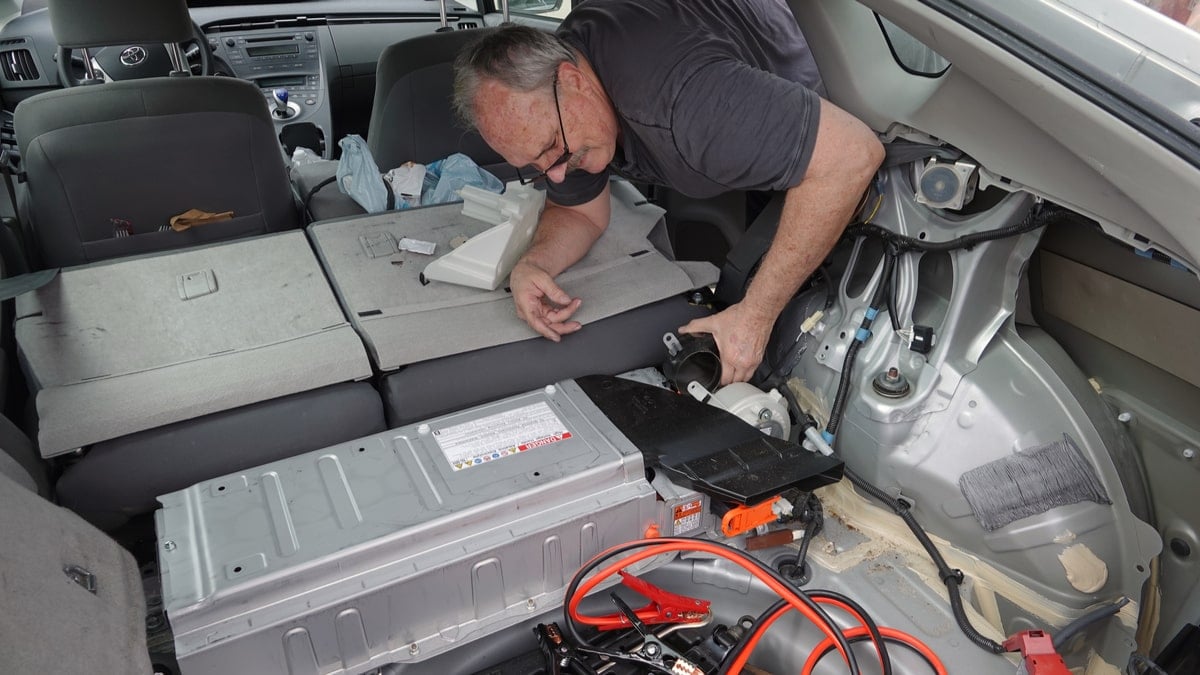There’s no set cost for getting your brake rotors replaced. The price varies depending on multiple factors, but when it’s time for this service, you want to ensure it gets done promptly, before your on-road safety is compromised.
So, how much can you expect a brake rotor replacement to cost, and is there a difference between the price for the front or rear rotors?
In this guide, I review the factors that affect the replacement cost. I also go over how often the rotors should be replaced, the need to have all four replaced, and the symptoms you might experience. I also talk about the possible benefits of rotor resurfacing.
How Much Does A Brake Rotor Replacement Cost?
On average, it costs between $150 and $500 per axle to replace the brake rotors. There are multiple ways you can save money on the service, from doing the job yourself to choosing lower-quality brake rotors.
The front brake rotors are usually slightly more expensive than the rear rotors, so you can count on an extra $50 to $100 for a front brake rotor replacement cost.
The largest factor of the brake rotor replacement cost is what types of brakes your car has, where you get it done, and what brand of brake rotors you buy. I’ll look a bit more at these factors in a bit, but first let’s take a look at some common brake rotor replacement costs for some common car models.
Brake Rotor Replacement Cost by Car Model
These are the average replacement costs for brake rotors per car model and model year. However, different car models can have different brakes for different engine types. The price may vary depending on your engine type and model year.
| Car Model | Rear Rotors (If Equipped) | Front Rotors | All Rotors |
|---|---|---|---|
| Ford F-150 | $400 | $500 | $900 |
| Honda CR-V | $300 | $400 | $700 |
| Chevrolet Silverado | $400 | $550 | $950 |
| Ram 1500/2500/3500 | $350 | $600 | $950 |
| Toyota RAV4 | $300 | $400 | $700 |
| Toyota Camry | $300 | $450 | $500 |
Factors Affecting Brake Rotor Replacement Cost
As I talked about earlier, there are many factors that can affect the cost of brake rotor replacement, so let’s take a look at some of the more common factors.
1. Front vs. Rear
The brake rotors on the front of your vehicle can be a different size than those on the rear. For this reason, you could face a different price based on what axle is being worked with.
In general, front brake rotors will perform most of the stopping power on a vehicle. If they are larger than the rear rotor diameter, the cost will naturally be higher.
2. Vehicle Make/Model
As with all car parts, the price of replacement parts will vary based on what you are driving. The smaller the brake rotors are, the less the replacement cost should be.
For example, if you drive a compact vehicle, it should be cheaper to replace the rotors than if you are driving a heavy-duty truck. The labor may also be cheaper because the job might be easier.
Finally, you must think about the cost of driving a luxury vehicle. Many German carmakers require special mechanics, which add to the price to begin with. Aside from that, the parts tend to cost more than your average vehicle.
3. OEM vs. Aftermarket
There are different price points when dealing with brake rotors, just as with anything else you purchase. You have the higher-end options available, and some cheaper models.
If you are opting for the OEM brake rotors, you may pay more than if you choose aftermarket parts. However, there are also some aftermarket parts that can be pricier. As you look at these options, consider how long they will last and the performance you can expect. It does cost more to ensure a longer life and proper operation, but the peace of mind is often worth the expense. Additionally, you want warranty protection included, just in case something does go wrong.
RELATED: OEM vs. Aftermarket Parts: Differences (& Which is Better?)
4. DIY vs. Professional Installation
If you are unsure how to change the brake rotors, it’s best to have a professional handle the job. However, you are going to spend more by using a repair shop.
On the other hand, if you feel comfortable changing your own brake rotors, you can save a lot of money. All you need to buy is the brake rotors, and the labor is simply a matter of time.
READ MORE: Mechanic Labor Rates Per Hour
5. Material
Rotors are made from various materials based on what your needs are. Low-cost brake rotors are made from cast iron, which doesn’t provide for a long life.
On the other hand, you can choose to use steel, aluminum or a carbon ceramic material if you are willing to pay a little more, or if you have a race car. The more you pay, the better the rotors are overall.
6. Performance Level
If you do a lot of towing or off-roading, you might prefer to invest in performance rotors. Otherwise, there’s no need to pay extra for high-performance rotors.
The type of performance rotors you choose can vary. There are options for slotted, drilled and vented rotors, all of which offer a different benefit.
7. Corrosion Resistance
If you live in an area that gets a lot of snow or where the humidity is high, it’s best to protect the rotors from corrosion. Manufacturers use different methods to reduce corrosion, all of which add to the price.
You can find brake rotors with electrophoretic zinc plating that increase the life. There are also powder-coated and painted rotors.
How Often Should Brake Rotors Be Replaced?
Every vehicle features a different maintenance schedule. For this reason, it’s best to follow the procedures outlined in the owner’s manual. You can also get this information from your local dealership.
However, most brake rotors need to be replaced every 50,000 to 75,000 miles. These schedules vary based on what kind of vehicle you drive and the way you use your vehicle. For example, if you are towing heavy loads, your brake rotors might wear out sooner than would happen with a daily commuter. That’s why it’s important to look for the signs that replacement is imminent.
READ MORE: How Often Should You Replace Brake Rotors? (Signs It’s Time)
How To Tell It’s Time for New Brake Rotors
1. Squealing/Grinding Sounds
The first sign that the brake pads are worn out is a squealing sound that occurs when you step on the pedal. If you change the pads promptly, the brake rotors might still be okay.
However, once the grinding sound starts occurring, you know that metal is contacting metal when you try to stop. This noise indicates that the brake rotors are being worn down and are in need of replacement.
2. Pulsating Brake Pedal
When the rotor becomes warped, it’s going to create a pulsating feeling in the pedal. This sensation occurs because the brake rotor is no longer flat.
With a warped brake rotor, the pad contacts different parts of the surface than normal. That’s the problem that leads to the pulsing, which slows down as the speeds drop.
3. Degraded Appearance
Looking at the rotor itself can help you diagnose a lot of issues. If the metal surface is cracked or has noticeable rust, it’s time to have them replaced. Otherwise, you are putting yourself in danger when you try to stop.
Additionally, as the brake rotor begins to wear, you might notice grooves or scoring on the surface. In these situations, it’s sometimes possible to resurface the rotor instead of replacing it. I will talk more about that option in a minute.
READ MORE: 7 Symptoms of Bad Brake Rotors (& Resurface Cost)
Should All Four Rotors Be Replaced?
No. You do not need to replace all four brake rotors. Changing the brake rotors on the same axle is sufficient in most cases. You should also replace the brake pads at the same time if they are not already brand new.
If you search online for this answer, you are going to find people in both camps arguing their point. Therefore, it’s important to think about the brake rotors in the same way you do the tires. Sure, all four of the car tires will need to be replaced at some point, but why would you want to replace any of them prematurely if it’s not needed?
If you can get another six months or so out of the other axle, enjoy it. Yes, you will need to make another trip to the repair shop, but you are saving money overall.
Can Brake Rotors Be Resurfaced?
Some brake rotors can be resurfaced instead of replaced. During the resurfacing, a small portion of the surface is taken off with the help of a lathe. Any deposits or corrosion can be wiped away, and the surface gets smoothed out for a longer life. If the brake pads are being replaced and the technician sees minor imperfections in the rotors, resurfacing might be recommended, and it doesn’t cost much to perform.
It’s important to note that resurfacing won’t fix all surface imperfections with the rotor. Hard spots can’t be removed from the cast iron material. There are also some rotors that are already too thin to be resurfaced. Thankfully, the technician should know when it’s appropriate and when it’s not.
If you are in doubt, it’s always best to replace the rotors versus resurfacing them. You don’t want the rotor to become so thin that it dips below manufacturer specifications. At this point, the rotor material is more susceptible to warping, which leads to an unsafe drive. Additionally, if the rotor is severely damaged, it should never be messed with. Save yourself the headache and get a new set installed.
READ MORE: Should I Resurface or Replace My Rotors? (When to Replace?)
Can You Drive With A Failed Brake Rotor?
Brake rotor failure should be taken very seriously. A broken brake rotor can cause you to lose all the brakes on your car, causing a serious accident and possibly even death. Replace the brake rotors if they are bad, and never take any risks with the brakes.
How long does it take to change brake rotors?
It usually takes 1 to 3 hours per axle to replace the brake rotors, depending on many factors such as how experienced the mechanic is and what type of car model the job is being performed on. Many very experienced mechanics can change brake rotors in under 30 minutes per axle.
Is it easy to change brake rotors?
Changing brake rotors yourself is quite simple on many car models. However, on some modern cars, it can be difficult, and you may even need special diagnostic equipment. On many modern cars with an electric parking brake, you must reset the brake caliper with a diagnostic computer before performing a brake rotor replacement.
Read more: How to Change Brake Pads With an Electric Parking Brake
A Mechanic’s Tips about Brake Rotor replacement
- Always replace the brake pads at the same time as the brake rotor.
- Make sure the caliper slide pin, caliper piston, and brake pads move freely when you put everything back together.
- If you replace the rear brake rotors, the parking brake shoes sometimes use the inside of the brake disc as a friction area. If this is the case with your car model, you will want to consider replacing the parking brake shoes at the same time.
- Some brake rotor replacement requires new gliding pins and parking brake parts, so make sure you count on all these parts when calculating the brake rotor replacement cost.
The average replacement cost of brake rotors is important to know, because it can help you budget for necessary maintenance on your vehicle. Brake rotors are an essential part of a car’s braking system and should be replaced when they show signs of wear. Knowing the average replacement cost of brake rotors can help you keep your car in good condition and avoid costly repairs down the road.
Be sure to check a repair manual for any special instructions before starting the project, and always exercise caution when working with cars.
Learn more:
